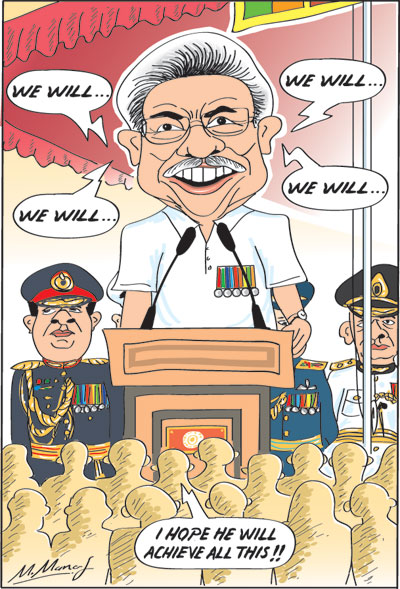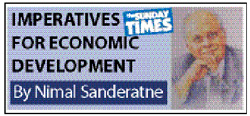Columns
Post-independence achievements and higher aspirations
View(s):On the 72nd anniversary of Independence once again the president articulated the aspirations of the country and its people. A society where all its communities could live in social harmony, where all its people could worship their own religion and where there would be freedom of speech and thought. These are essential prerequisites for economic development. Let us hope that these aspirations would be transformed into institutional reality.
One of the foremost setbacks to the country’s economic development has been several periods of ethnic violence and the nearly three decade of civil war. Apart from the Economic disruption, dislocation and direct impacts on the economy the ethnic violence resulted in several waves of brain drain from the country. This reduced the capacity of the country to perform better economically.
 Achievements
Achievements
There have been much disappointment with the underperformance of the Sri Lankan economy. However, there have been notable achievements. In 2019 Sri Lanka achieved high middle-income status with a per capita income exceeding $4,000. Equally, significant is the fact that the country which was highly dependent on its staple food rice, achieved self-sufficiency. It is no mean achievement for a country that depended on rice imports to feed a population of 7 million at the time of independence has achieved self-sufficiency in rice for a population of over 21 million.
Social Achievements
There are other significant socio-economic achievements as well. These include a high level of adult literacy, a high life expectancy, a high level of school enrolment and low levels of maternal and infant mortality. In many ways, Sri Lanka’s social achievements are better than countries at or above our per capita income.
Reasons
The reasons for disappointment with the country’s economic performance is due to the post-independence performance being less than the potential. Countries that were less developed than Sri Lanka such as Singapore, South Korea and some other countries of Asia are far ahead now. Two countries that are growing faster than Sri Lanka are Vietnam and Bangladesh. In 2019 Sri Lanka was about the slowest growing country in South Asia. Bangladesh was growing at over twice the economic growth of Sri Lanka.
Disappointing?
Given the far better initial conditions that the country had at independence the annual average economic growth during the post-independence years of about 4.5% is considered disappointing. However, such a growth rate over the seven decades is not necessarily disappointing. Certainly, the country could have achieved a much higher rate of economic growth had we achieved social harmony and the country’s economy not being disrupted by ethnic and religious upheavals. It must also be recognised that the country faced several external shocks that had serious setbacks to the economy.
 Pre-independence
Pre-independence
One of the factors that is neglected when evaluating the country’s economic development is that the process of economic and social development began prior to Independence. The granting of the Donoughmore constitution in 1931 with the universal franchise was the foundation of the country’s economic and social development. The revival of food, crops in the dry zone by the resettlement of people in land development schemes resulted in high production of rice and other food crops. Together with the development was the social welfare measures. Free education, free health, expansion of both educational facilities and health the eradication of malaria in 1946/7, contributed vastly to the country’s economic and social development. It must be recognised that the vital policies for economic and social development preceded Independence.
In the post-independent period, there was certainly an acceleration of these economic and social welfare programs. These contributed towards the high human development indicators. However the large welfare expenditure was also a reason for lower investment and economic growth. In addition the high population growth of an annual average of 2.8% in the 1950’s, 2.6% in 1960’s and 2.4% in the 1970’s increased the welfare expenditure and reduced the capacity of the economy to invest in economic development.
Challenges
Achieving a higher trajectory of Economic growth will be a challenging task in 2020 onwards. The recessionary conditions in the world economy, geo political tensions and trade conflicts, lesser foreign investment and low economic growth in the region are serious disadvantages. The external vulnerability of the economy owing to the large debt repayment obligations makes the country’s economy unstable. This year being another election year is not conducive to taking corrective actions on economic policies.
Concluding reflections
Sri Lanka has achieved much in the 72 years after independence. However, these achievements have been much below expectation. Many Asian countries that were much less developed than Sri Lanka are at a higher level of economic growth and per capita income. Furthermore, it must be recognised that the nation’s economic and social development began before Independence.
What the nation hopes for is that in the next few years the aspirations that were eloquently and clearly articulated by His Excellency the President at the Independence celebrations on February 4th will be achieved during the next few years.


Leave a Reply
Post Comment